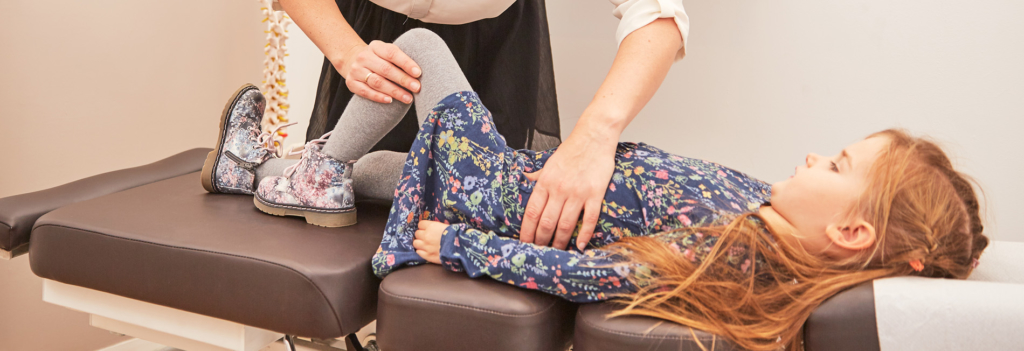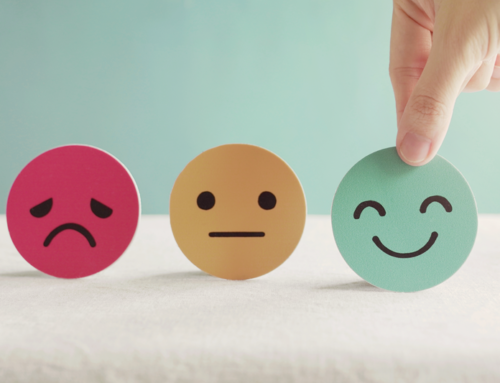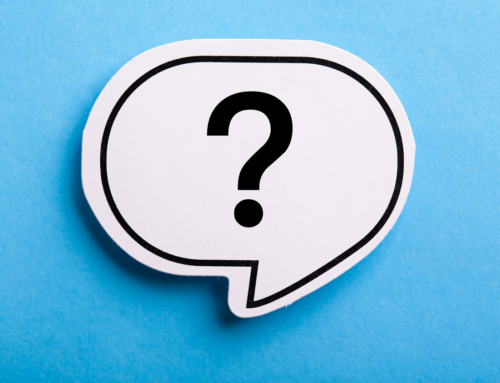Exclusively for our clients and friends of Northcote Chiropractic Dr Chiara gives an insight into her study that just earned her a Distinction in her Masters in Paediatric musculoskeletal health.

She decided to do a study on this as musculoskeletal (MSK) pain contributes heavily to the global burden of disease, MSK related problems being the leading cause of disability worldwide (Vos et al., 2012). MSK pain in children and adolescents is common representing between 4% and 8% of visits to the general practitioner (Pourbordbari, Riis, Jensen, Olesen & Rathleff, 2019). Globally, chiropractors commonly treat paediatric patients, especially for MSK and neurologic complaints (Marchand 2012). Qualitative accounts of the mothers, representing the child’s primary caretaker, are lacking in the literature despite their considerable value.
The objectives of Chiara’s research were ambitious. She conducted a qualitative study as this kind of research within physical therapy is rare despite its utility and no account of in-depth maternal perceptions of chiropractic treatment exists to date. Filling a gap in the literature, the aim of this study was primarily to explore the maternal experience of having a child receiving chiropractic treatment.
Seven mothers of returning paediatric patients at a London based chiropractic clinic participated in the interview. Their children below the age of 16 years had received at least four treatments by one of the four treatments by one of the four chiropractors at the clinic. Due to social distancing measurements, all seven semi-structured interviews were conducted and recorded online.
The interviews aimed to explore the maternal experience of having her child receive chiropractic treatment, leaving room for her to discuss her challenges in parenting and motherhood.
The analysis identified four themes:
- Challenges of motherhood and parenting,
- the role of chiropractic,
- the perceived benefit for the mother and
- child and chiropractic as a means of communication.
Some mothers further described their worries about their children, describing it as
“difficult sometimes to get some perspective on what you worry about with your children.” – Sandra
Most of the mothers experienced some form of anxiety around solving problems for her child, one mother describing it as
“…immediate sense of stress or anxiety that you need to fix it as soon as possible.” – Laura.
Other mothers elaborated on the feeling of responsibility of always being in charge. She discusses
“feeling that huge responsibility of the fact that I am in charge of guiding somebody who is quite determined and quite independent.” – Anna.
One mother even pointed out that having a chiropractor assess her child made her feel
“…like the responsibility wasn’t entirely held on my own shoulders.” – Kelly.
All mothers discussed the role of chiropractic in their lives, elaborating on their perception of chiropractic as a holistic approach to healthcare. Mothers appreciate that chiropractic supports them in what is described as a
“…full-body, mind, wellbeing experience.” – Alison.
Mothers seemed to use holistic and proactive interchangeably stating that:
“..I’m a holistic person, I’ll do a bit of everything, whatever I can, I’m very proactive in trying to keep us all balanced.” – Sandra.
Participants believed that bringing her child to the chiropractor made her proactive about her child’s health. Furthermore, mothers stated that
“…just knowing that that’s being monitored makes me feel better in control of the situation.” – Laura.
Most feel that bringing their child to the chiropractor makes their child feel better, which in turn makes them feel better, stating:
“It’s good for me mentally, I feel good about the fact we’re doing something positive for them…” – Anna.
The mothers in this study elaborated on the perceived benefit for her child when receiving chiropractic treatment. The mothers stated that their child liked the treatment and experiences pain relief when seeing a chiropractor. Overall, they perceive the treatment for their children to be a very positive experience. Some mothers even state that the chiropractic treatment helps them understand and communicate their bodies’ signals more effectively. One mother specifically elaborates on this stating that
“…I think she’s using that language more and more as she comes as well, because she’s relating to her body.” and “..I mean, [child ]gets neck pain, she gets shoulder pain, she’s very specific with me where it is.” – Anna.
In general, mothers perceived chiropractic treatment to have a very positive effect on their lives, and even describe it to have had a significant impact on their activities of daily living.
“So yes, we were just able to get out and about and do normal things. And it meant that, like, I was happy and relaxed enough to want to do that, which I’m sure benefited her as well as me.“ – Kelly.
All mothers discussed chiropractic as a means of communicating with her child. The mothers talked about the chiropractor acting as a link between her and her child, communicating the children’s needs to the mothers. One mother states that:
“I think having a chiropractor take the time to vocalise what they’re doing […] it’s a very subtle art and you’re feeling with your fingers, but to communicate that to the mother is really helpful because it helps provide clarity…” – Natalie.
Difficulty communicating with their children was one of the key contributors of stress for the mothers, and they perceived chiropractic to aid with effective communication. A mother states:
“Your kids will be sick, your kids will seem uncomfortable, then cannot communicate…” – Laura.
Many mothers talked about the worry associated with not knowing what the child’s physical and emotional needs are as well as the reassurance the chiropractor was able to provide. One mother states discusses:
“I think the thing that I’ve probably found most valuable and that I’ve really appreciated from you, both in terms of my treatment and [child] is the communication […], but I realise having had the benefit of you explain to me what you’re doing and why you’re doing it, that’s what gives me the reassurance.” – Natalie.
Another mother elaborated on how her teenage children follow the chiropractor’s guidance better than her own. She states:
“My children listen to you. So, I will notice having moaned at [child] for having curvature of the spine from looking at his phone for so many months and every school break he gets. He will come and see you and you offer practical advice, non-judgemental, and he can feel that.” – Sandra.
One mother talked about how much her tension affects her child and opens room for discussion about how the mother’s well-being can affect her child.
“That tension in my body must have transmitted to her body, so she may have come out quite relaxed but, you know, the tension that I was feeling had got to impact her.” – Natalie
Exploring mothers’ experiences illuminated the maternal need to do something positive, holistic and proactive for her child which she perceives chiropractic to be. Mothers also identified the need for better communication with her child and they state that chiropractors can act as links between the mother-infant dyad. Despite some limitations to this study new evidence was added to the growing body of studies on the mother-infant dyad. Chiara aims to publish this study in due course and thanks all the Northcote Chiropractic clients who donated their time and shared their experiences so openly.
References
Marchand, A. (2012). Chiropractic Care of Children from Birth to Adolescence and Classification of Reported Conditions: An Internet Cross-Sectional Survey of 956 European Chiropractors. Journal Of Manipulative And Physiological Therapeutics, 35(5), 372-380. doi: 10.1016/j.jmpt.2012.04.008
Pourbordbari, N., Riis, A., Jensen, M., Olesen, J., & Rathleff, M. (2019). Poor prognosis of child and adolescent musculoskeletal pain: a systematic literature review. BMJ Open, 9(7), e024921. doi: 10.1136/bmjopen-2018-024921
Vos, T., Flaxman A., Naghavi M., Lozano R., Michaud C., Ezzati M., Shibuya K., Salomon J., Abdalla S, Aboyans V, Abraham J, Ackerman I, Aggarwal R, Ahn S, Ali MK, AlMazroa M, Alvarado M, Anderson H, Anderson L.,… Andrews KG. (2012). Years lived with disability (Ylds) for 1160 sequelae of 289 diseases and injuries 1990–2010: a systematic analysis for the global burden of disease study 2010. The Lancet, 380(9859), 2163–2196. doi: 10.1016/S0140-6736(12)61729-2






